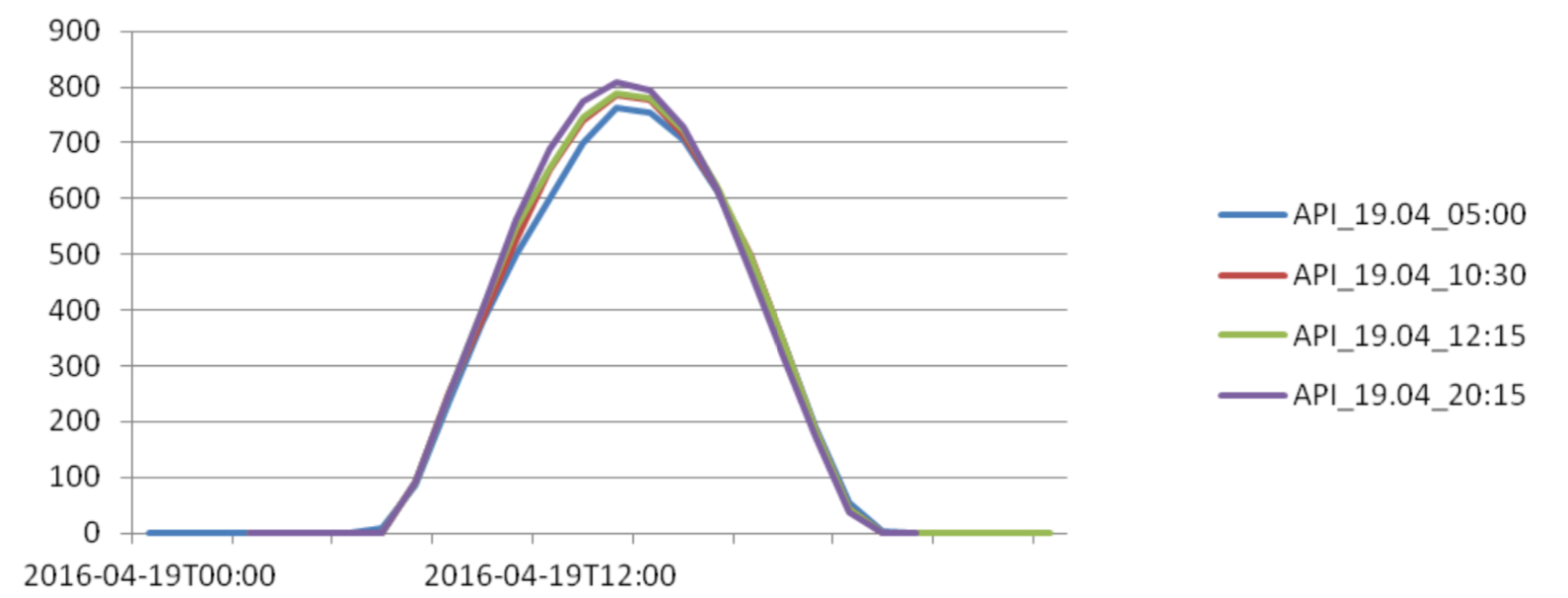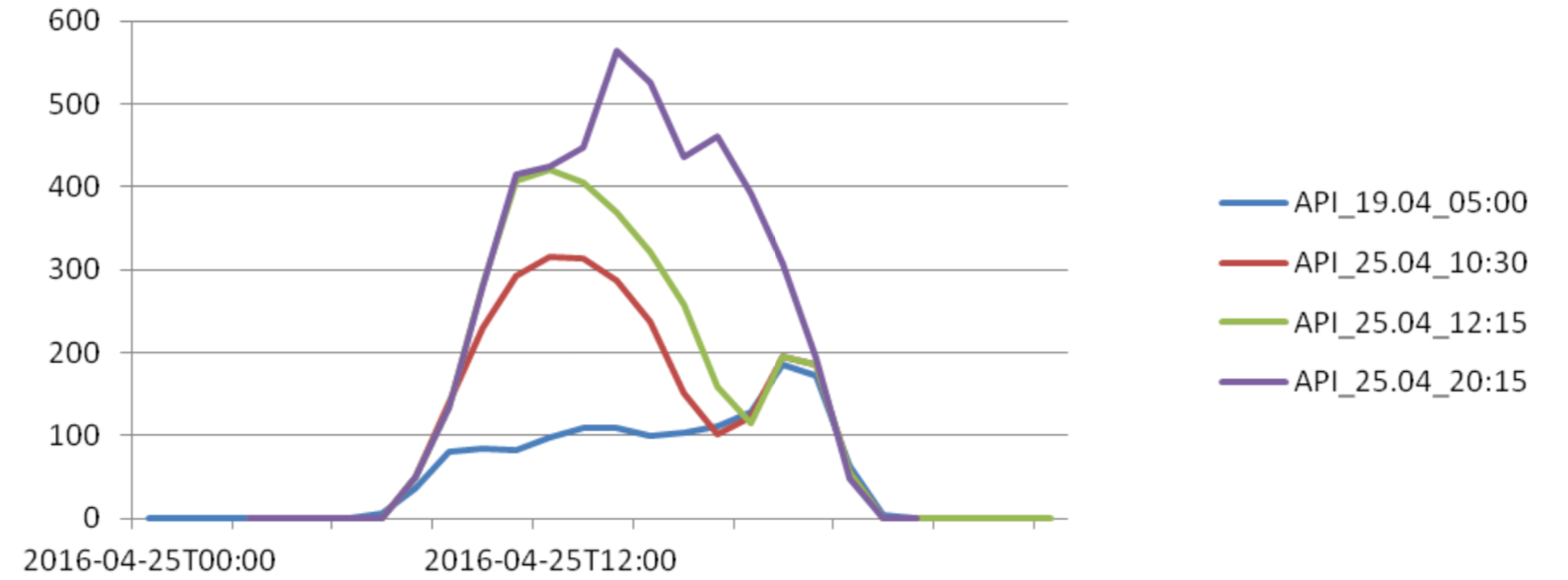Solar Monitoring and Nowcasting
Description
Solar nowcasting is the correction of radiation forecast based on real time satellite observations collected every 15 minutes. Thereby, the model radiation output of the present day is corrected in real time with the satellite derived radiation. Based on the actual cloud pattern and wind vectors a so-called cloud motion forecast is processed which optimises the forecast accuracy of the next 5 hours. Depending on the actual weather situation persistence, cloud motion and the model output are weighted differently for the time horizons of the next hours.

The solar forecast retrieved before sunrise (blue), in the morning (red) at noon (green) and after sunset (violet) of the same day
The optimised radiation nowcast will reduce short term forecast errors of all radiation and solar power variables and allows satellite monitoring of solar energy yields, because the actual satellite observation is applied on past time stamps (up to 4 days back). Thus, the solar forecast API contains only observation values after sunset and is therefore combining forecast and monitoring within the same data feed. The effects of nowcasting are depending on the accuracy of the weather model. If the day ahead forecast is correct, nowcasting has almost no impact (see Figure above), otherwise the nowcast is strongly changing the content of the API (see Figure below).

The solar forecast retrieved before sunrise (blue), in the morning (red) at noon (green) and after sunset (violet) of the same day
Nowcasting Variables
Presently, the nowcasting technology is automatically implemented in the API for all locations withing sight of the Meteosat Second Generation (MSG) satellite. Thus, it covers Europe, the Arabian Peninsula, Africa, Brazil and parts of its neighbouring countries (see figure below).

The full MSG disc of Global Horizontal Radiation (GHI) at 2016-03-16 15:00 UTC (Source: KNMI)
Nowcasting Variables
The nowcasting is implemented on all radiation variables and solar power simulations.
Cloud Motion Vectors (CMV)
Based on the image of the cloud-top level, the wind vectors of the next 6 hours are extracted for the specific cloud height of each point. A cloud motion vector (wind trajectory) is calculated for each time horizon of 1-6 hours.
Solar Radiation Nowcast Based on Cloud Motion Vectors (CMV)
Based on the six wind trajectories, the referring pixel layer is chosen for each time horizon (1-6 hours). This pixel is used to calculate the expected radiation. The result is a radiation forecast for the next 6 hours. Cloud motion nowcasting works only after sunrise when the referring satellite data is available.
Persistence Solar Radiation Nowcast
For the persistence solar radiation nowcast, the radiation of the last 4 hours is used (without any cloud motion) and weighted.
Combined Solar Radiation Nowcast
For different time horizons and weather situations, the weighing of persistence, cloud motion and numerical weather prediction is changing. It is useful to combine the different approaches to minimize errors. Weather variability could be classified with the clearness index of the surrounding satellite pixels.
Expected Accuracy
The expected accuracy of radiation or power forecast with nowcasting is between 5 and 20% rMAE on an hourly basis for 0-5 hour forecast, depending on location and satellite availability. The accuracy of the nowcast is declining over the forecast horizon (see Figure 7.5). After 5 hours, the multi-model is performing better than the nowcast.

Nowcasting (red: 1h, blue:2h, orange:3h) improves performance of solar forecast service (black line). Vertical axis shows MAE (in %) of hourly forecast over a full year. Stations sorted in order of ascending error.